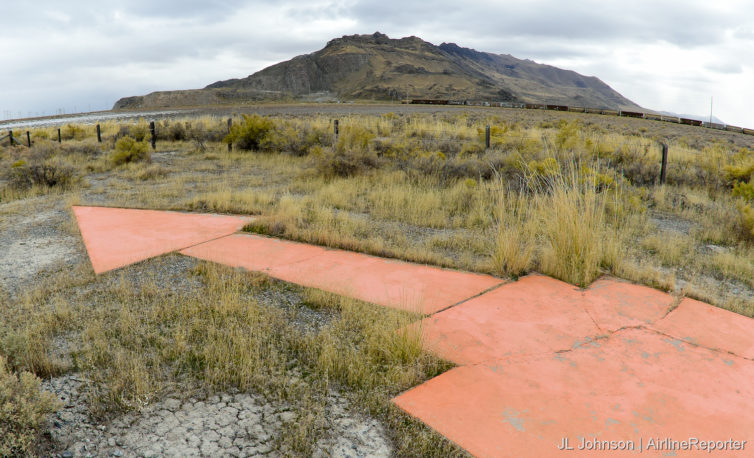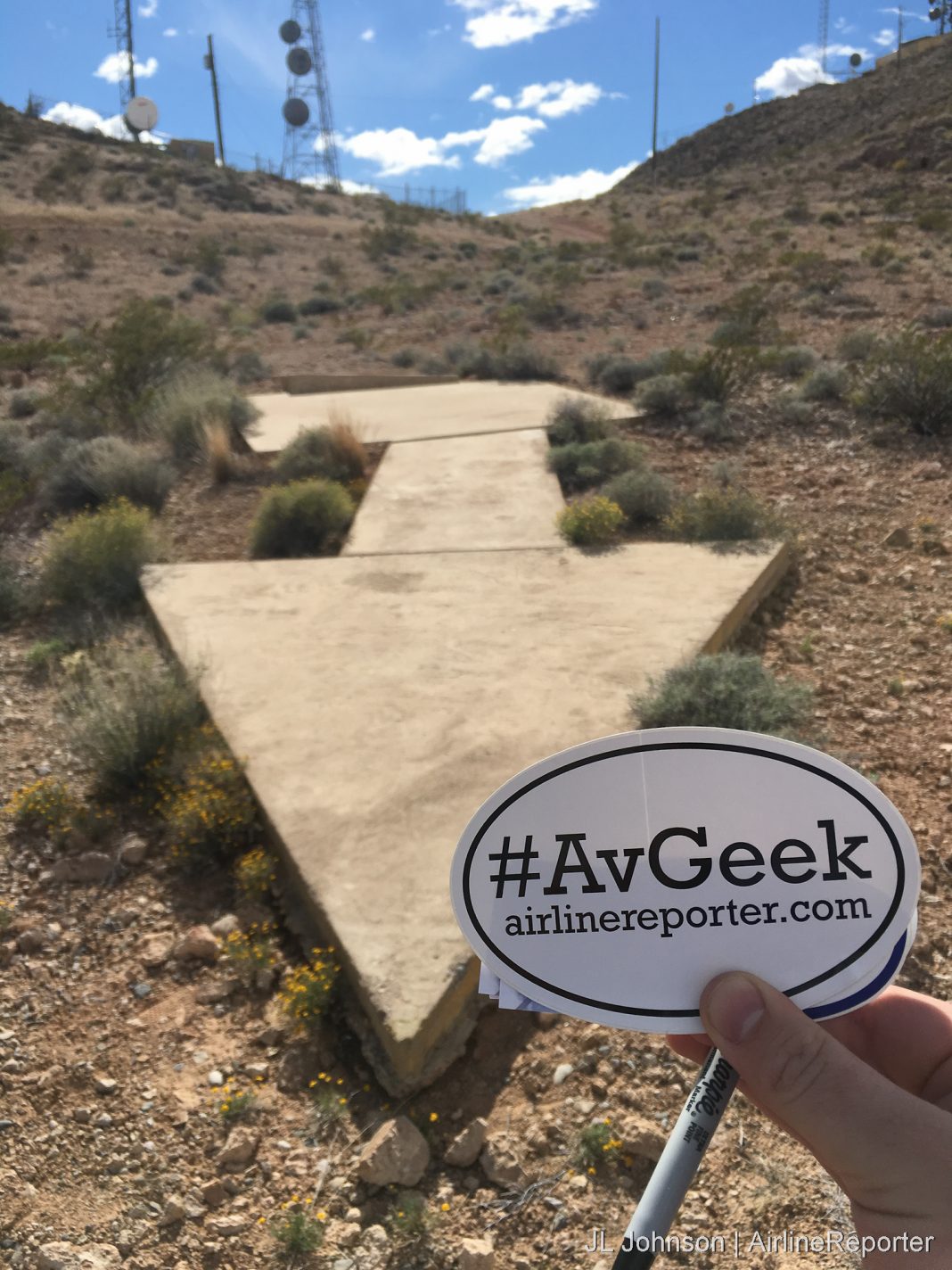
Seen in 2019 – an air mail arrow outside Salt Lake City, Utah points to SLC on the San Francisco-Salt Lake route
We aren’t ready to fly. Which is a bummer because travel is a large part of our identity. What are sidelined AvGeeks to do to remain connected to our passion? We are all coping with this disaster
in different ways. Looking to an aspirationally brighter future (and planning future travel) is certainly one method that holds promise. For my [formerly] frequently-traveled household we have been deep in research and planning for most of the year. As a result, our impossibly long #AvGeekToDoList has grown a great deal since our voluntary pandemic-grounding. One item of low-hanging socially-distanced fruit on our list is getting out and visiting more air mail arrows.
I have long been fascinated with the infancy of U.S. aviation. Keen AirlineReporter readers and AvHistorians alike will know that the modern aviation industry is what it is because of air mail. Indeed, all of the domestic legacies – except Delta – were formed or became successful because of income from air mail. These earliest routes were flown mostly during the day. In the evenings, mail would continue to travel, albeit via train. To further increase the speed of airmail it was determined night flying would be required. Thankfully congress stepped in to fund a vast array of large concrete arrows and beacons which formed the lighted Transcontinental Airway System (TAS.) At its peak the TAS had one concrete arrow roughly every 10 miles along the various routes. The TAS and its air mail arrows provided the infrastructure for the air mail boom which, in time, led to normalization of passenger service.
BONUS: How Delta got their non-airmail start
Join us for a discussion on how you can plan your own trip to visit these nearly forgotten 1920s-era relics of aviation’s past.
Finding your own air mail arrows and beacons:

2016 – An air mail arrow in Clark County, Nevada points to Salt Lake City on the Los Angeles-Salt Lake route
Most of the TAS sites no longer exist. After only a few decades of use they simply were no longer needed thanks to the advancement of technology. By the time the U.S. entered World War II, it was clear the giant concrete arrows pointing to major cities were an issue of national security and many were intentionally destroyed. A few dozen air mail arrows and/or their related structures remain sprinkled about the continental U.S. Surprisingly, the few I have visited personally (most in the Southwest) remain in decent condition.

Map with likely TAS locations. Image: – Zhanna’s SurveyStation
Of the remaining sites, a good number remain on public land an hour or two from major cities or airports. Some are on-site at small airports which are generally happy to invite visitors on pre-arranged visits, and at least one has transformed to the Aviation Heritage Museum in New Mexico. Air mail arrows are found on private property (get permission), right off of major interstates, at the top of mountains and in the middle of deserts. Trips to these sites requires a lot of research and planning. For someone like me, that’s where the fun begins because with effort comes rarity of experience.

A rare air mail arrow and beacon combo seen at GOK- Guthrie Edmond Regional Airport, Oklahoma in 2016
There are many sites that will aid you on your journey. I suggest looking at a bare minimum the following:
- DreamSmithPhotos– Perhaps the most comprehensive site which has been added to for many years. Go here for lists of sites by state including historical documents which provide background on many of the sites.
- Zhanna’s SurveyStation– More information on locations, in some cases with more recent reports on conditions.
- Wyoming PBS- Cowboys of the Sky- A public media produced 27 minute video discussing air mail and other early aviation topics with some emphasis on Wyoming.
Conclusion:
There is no better time than now to start researching and planning your own excursion to visit one or more of these sites. Be safe and respect private property, but get out and visit these unique links to aviation’s past. For without these arrows, the industry as we know it today would be drastically different.
Have you been to any of these sites, or have we made the case for you to do so? Let’s continue the conversation in the comments below. And when you do make it to one of these sites, let us know with a Tweet or email.
[ad_2]
Source link


